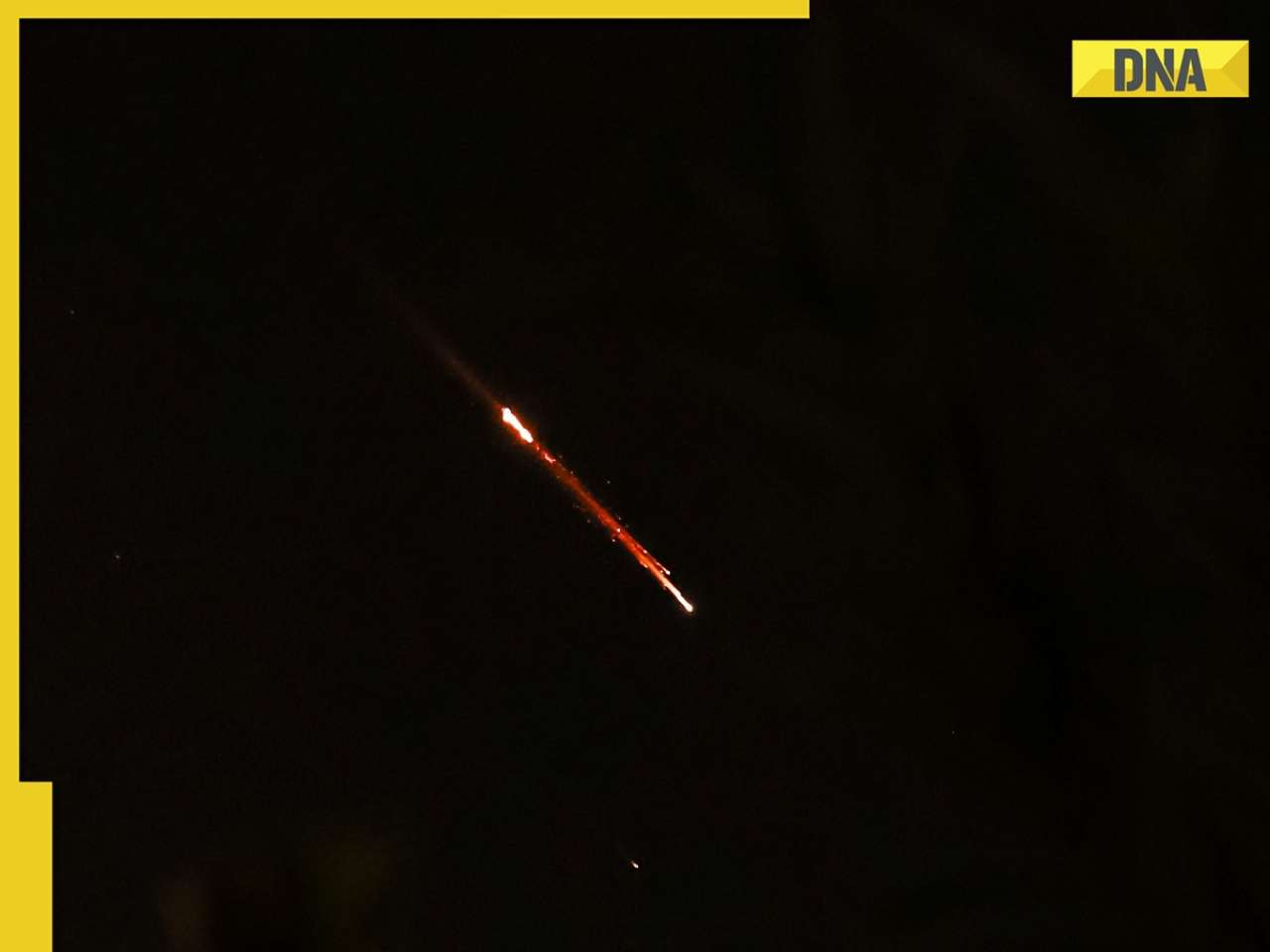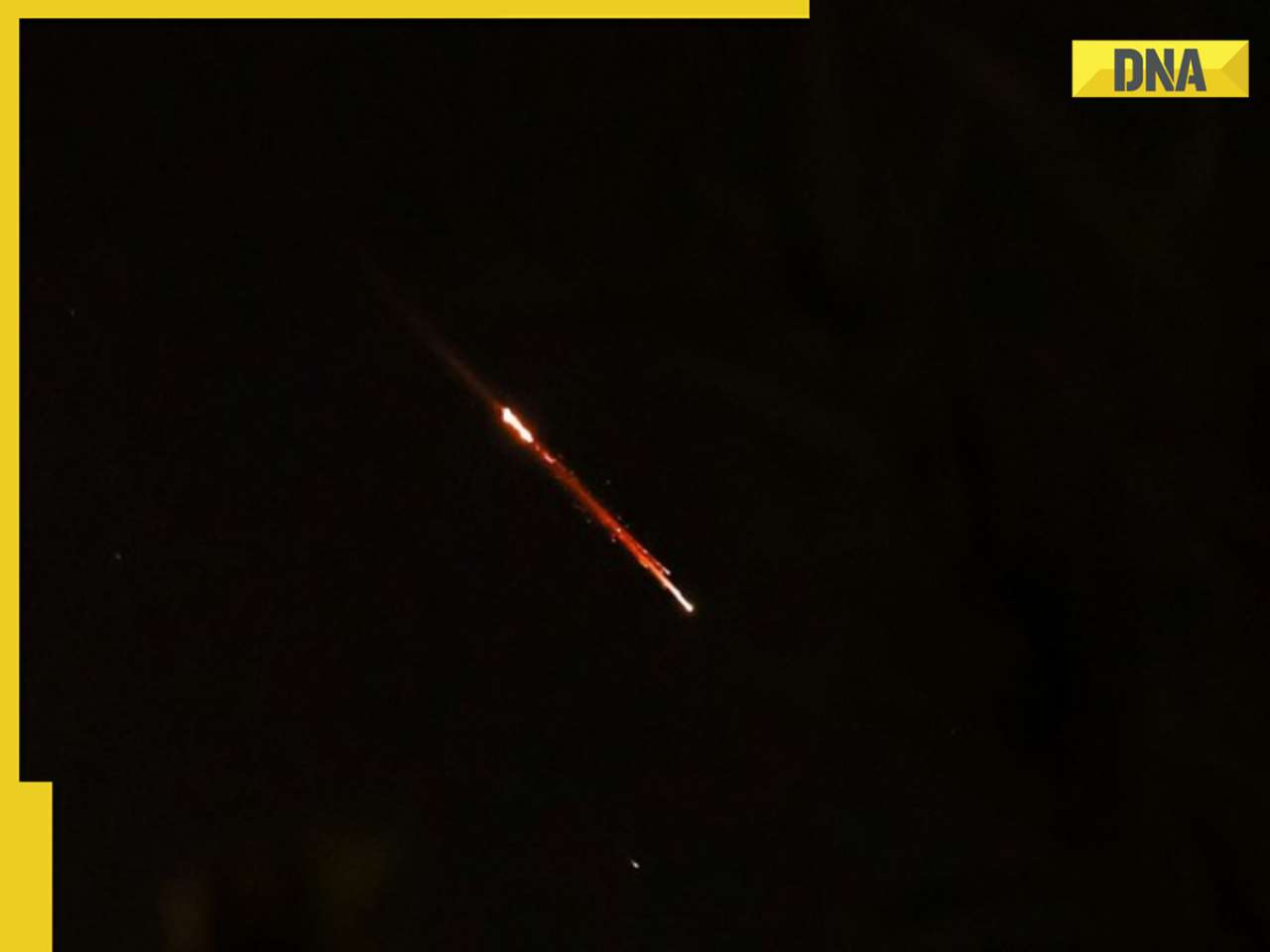While the Earth’s magnetic shield absorbs most solar storms, some powerful ones can cause widespread chaos. The one incoming falls in this category.
With a fierce solar storm moving towards the Earth at a speed of 1.6 million kilometers per hour, there are concerns this storm may cause a power failure around the world. And its likely to hit today!
The storm originated from the Sun's atmosphere. According to the website SpaceWeather.com, a hole has opened up in the Sun's atmosphere which is now spewing a stream of solar wind in Earth's direction.
What is a solar storm?
Commonly referred to as a solar storm, scientists call the phenomenon a geomagnetic storm. As per NASA, solar storms are “a variety of eruptions of mass and energy from the solar surface.” These are caused by solar features and phenomena like flares, prominences, sunspots, and coronal mass ejections (CMEs).
In a solar storm, stored magnetic energy is suddenly released from the sun. These solar winds of energy can sometimes hit the Earth and cause temporary disturbances in the planet’s magnetic field. While Earth’s magnetosphere, its magnetic shield, absorbs most of these solar storms, some of them can cause chaotic disturbances like blinding satellites, disrupting mobile phone and GPS signals as well as widespread power outages.
How will it affect mobile phone and GPS signals?
Collisions too hot to handle for Earth’s magnetic field can impact communication, energy transmission and weather in the region of space dominated by Earth's magnetic field.
The strong electrical currents from these solar storms cause changes in the Earth’s ionosphere which interfere with high-frequency radio communications, mobile phones and GPS signals. Furthermore, solar protons can also be absorbed by polar caps of Earth which can compromise radio communications for airplanes flying on transpolar routes, as per NASA.
The incoming solar storm
As per NASA, the speed of the solar storm could further accelerate to more than 1.6 million kilometres per hour. The impact is expected to be centered on sub-solar point on the sunlit side of Earth, according to the US Space Weather Prediction Centre.
What does a solar storm look like?
The auroras seen in the skies at the North or South Pole are a result of this interaction where solar winds deport charged particles like solar protons in the upper atmosphere of Earth.
Has Earth been hit by a solar storm before?
Historically, solar storms have the ability to cause temporary chaos. A March 1989 solar storm caused a nine-hour blackout at Hydro-Québec's electricity transmission system in Canada. The largest solar storm ever recorded occured on 1859 and is called the Carrington Event.
![submenu-img]() Manipur Police personnel drove 2 Kuki women to mob that paraded them naked: CBI charge sheet
Manipur Police personnel drove 2 Kuki women to mob that paraded them naked: CBI charge sheet ![submenu-img]() Delhi-NCR schools receive bomb threat call, evacuated
Delhi-NCR schools receive bomb threat call, evacuated![submenu-img]() AstraZeneca admits Covishield vaccines raises rare side-effects risk. How worried should you be?
AstraZeneca admits Covishield vaccines raises rare side-effects risk. How worried should you be?![submenu-img]() Meet Mukesh Ambani’s ‘brother’, left his own firm to join Reliance, not Anil Ambani, his son now has Rs 650000000000…
Meet Mukesh Ambani’s ‘brother’, left his own firm to join Reliance, not Anil Ambani, his son now has Rs 650000000000…![submenu-img]() Meet actor, beaten up in school, failed police entrance exam, lived in garage, worked as driver, now worth Rs 650 crore
Meet actor, beaten up in school, failed police entrance exam, lived in garage, worked as driver, now worth Rs 650 crore![submenu-img]() DNA Verified: Is CAA an anti-Muslim law? Centre terms news report as 'misleading'
DNA Verified: Is CAA an anti-Muslim law? Centre terms news report as 'misleading'![submenu-img]() DNA Verified: Lok Sabha Elections 2024 to be held on April 19? Know truth behind viral message
DNA Verified: Lok Sabha Elections 2024 to be held on April 19? Know truth behind viral message![submenu-img]() DNA Verified: Modi govt giving students free laptops under 'One Student One Laptop' scheme? Know truth here
DNA Verified: Modi govt giving students free laptops under 'One Student One Laptop' scheme? Know truth here![submenu-img]() DNA Verified: Shah Rukh Khan denies reports of his role in release of India's naval officers from Qatar
DNA Verified: Shah Rukh Khan denies reports of his role in release of India's naval officers from Qatar![submenu-img]() DNA Verified: Is govt providing Rs 1.6 lakh benefit to girls under PM Ladli Laxmi Yojana? Know truth
DNA Verified: Is govt providing Rs 1.6 lakh benefit to girls under PM Ladli Laxmi Yojana? Know truth![submenu-img]() Remember Heyy Babyy's cute 'Angel' Juanna Sanghvi? 20 year-old looks unrecognisable now, fans say 'her comeback will...'
Remember Heyy Babyy's cute 'Angel' Juanna Sanghvi? 20 year-old looks unrecognisable now, fans say 'her comeback will...'![submenu-img]() In pics: Arti Singh stuns in red lehenga as she ties the knot with beau Dipak Chauhan in dreamy wedding
In pics: Arti Singh stuns in red lehenga as she ties the knot with beau Dipak Chauhan in dreamy wedding![submenu-img]() Actors who died due to cosmetic surgeries
Actors who died due to cosmetic surgeries![submenu-img]() See inside pics: Malayalam star Aparna Das' dreamy wedding with Manjummel Boys actor Deepak Parambol
See inside pics: Malayalam star Aparna Das' dreamy wedding with Manjummel Boys actor Deepak Parambol ![submenu-img]() In pics: Salman Khan, Alia Bhatt, Rekha, Neetu Kapoor attend grand premiere of Sanjay Leela Bhansali's Heeramandi
In pics: Salman Khan, Alia Bhatt, Rekha, Neetu Kapoor attend grand premiere of Sanjay Leela Bhansali's Heeramandi![submenu-img]() DNA Explainer: Why Harvey Weinstein's rape conviction was overturned, will beleaguered Hollywood mogul get out of jail?
DNA Explainer: Why Harvey Weinstein's rape conviction was overturned, will beleaguered Hollywood mogul get out of jail?![submenu-img]() What is inheritance tax?
What is inheritance tax?![submenu-img]() DNA Explainer: What is cloud seeding which is blamed for wreaking havoc in Dubai?
DNA Explainer: What is cloud seeding which is blamed for wreaking havoc in Dubai?![submenu-img]() DNA Explainer: What is Israel's Arrow-3 defence system used to intercept Iran's missile attack?
DNA Explainer: What is Israel's Arrow-3 defence system used to intercept Iran's missile attack?![submenu-img]() DNA Explainer: How Iranian projectiles failed to breach iron-clad Israeli air defence
DNA Explainer: How Iranian projectiles failed to breach iron-clad Israeli air defence![submenu-img]() Meet actor, beaten up in school, failed police entrance exam, lived in garage, worked as driver, now worth Rs 650 crore
Meet actor, beaten up in school, failed police entrance exam, lived in garage, worked as driver, now worth Rs 650 crore![submenu-img]() Harman Baweja and wife Sasha Ramchandani blessed with a baby girl: Report
Harman Baweja and wife Sasha Ramchandani blessed with a baby girl: Report![submenu-img]() Parineeti Chopra says she didn't even know if Raghav Chadha was married, had children when she decided to marry him
Parineeti Chopra says she didn't even know if Raghav Chadha was married, had children when she decided to marry him![submenu-img]() Mukesh Chhabra opens up about his fallout with Kriti Sanon, confesses to hurting her: 'I lied about her and then...'
Mukesh Chhabra opens up about his fallout with Kriti Sanon, confesses to hurting her: 'I lied about her and then...'![submenu-img]() Meet actress, who became a star at 19, got stuck with bold roles, sex scenes; quit films, now lives in poverty
Meet actress, who became a star at 19, got stuck with bold roles, sex scenes; quit films, now lives in poverty![submenu-img]() IPL 2024: Marcus Stoinis, Mohsin Khan power Lucknow Super Giants to 4-wicket win over Mumbai Indians
IPL 2024: Marcus Stoinis, Mohsin Khan power Lucknow Super Giants to 4-wicket win over Mumbai Indians![submenu-img]() 'Horrifying, hope he keeps...': KKR co-owner Shahrukh Khan on Rishabh Pant's life-threatening car accident
'Horrifying, hope he keeps...': KKR co-owner Shahrukh Khan on Rishabh Pant's life-threatening car accident![submenu-img]() CSK vs PBKS, IPL 2024: Predicted playing XI, live streaming details, weather and pitch report
CSK vs PBKS, IPL 2024: Predicted playing XI, live streaming details, weather and pitch report![submenu-img]() CSK vs PBKS IPL 2024 Dream11 prediction: Fantasy cricket tips for Chennai Super Kings vs Punjab Kings
CSK vs PBKS IPL 2024 Dream11 prediction: Fantasy cricket tips for Chennai Super Kings vs Punjab Kings![submenu-img]() KKR's Harshit Rana fined 100 per cent of his match fees, handed 1-match ban for....
KKR's Harshit Rana fined 100 per cent of his match fees, handed 1-match ban for....![submenu-img]() Where is the East India Company, which ruled India for 200 years, now?
Where is the East India Company, which ruled India for 200 years, now?![submenu-img]() Russian woman alleges Delhi airport official wrote his phone number on her ticket, video goes viral
Russian woman alleges Delhi airport official wrote his phone number on her ticket, video goes viral![submenu-img]() Viral video: School teachers build artificial pool in classroom for students, internet loves it
Viral video: School teachers build artificial pool in classroom for students, internet loves it![submenu-img]() Viral video: Wife and 11-year-old son of Bengaluru businessman become Jain monks, details inside
Viral video: Wife and 11-year-old son of Bengaluru businessman become Jain monks, details inside![submenu-img]() Mukesh Ambani's son Akash Ambani visits Ram Temple in Ayodhya, pics surface
Mukesh Ambani's son Akash Ambani visits Ram Temple in Ayodhya, pics surface








































)




)
)
)
)
)
)